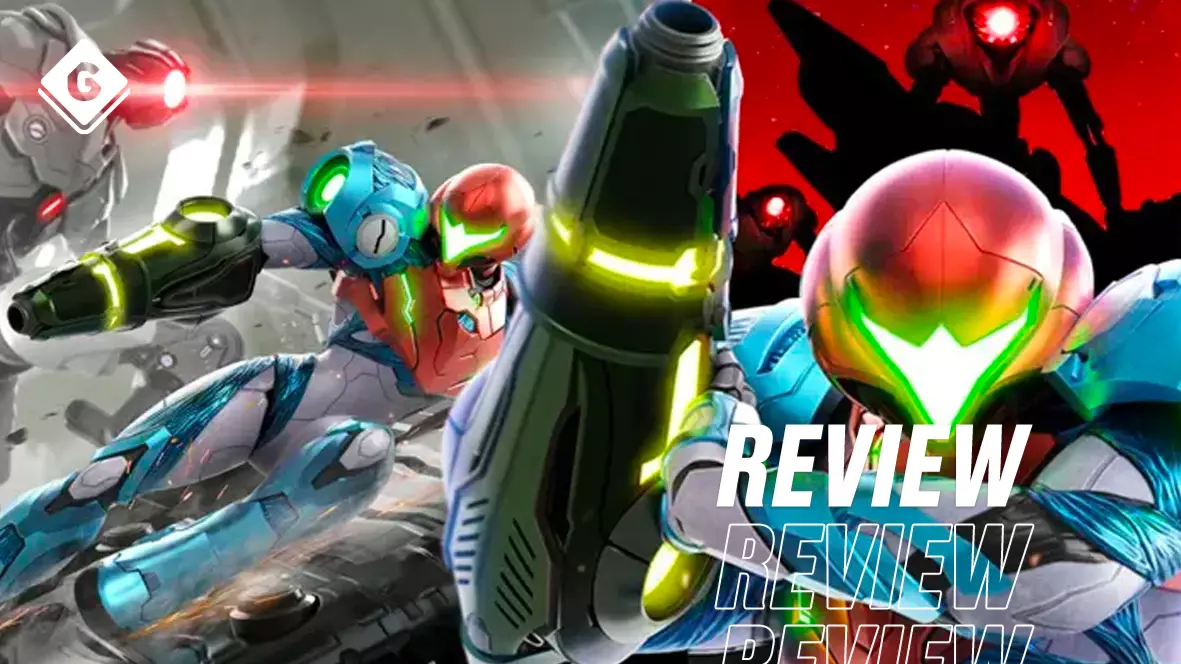
From the moment the iconic Super Metroid theme echoes through the darkness and we see Samus Aran touching down on a hostile alien planet for the first time in far too long, we know we're in safe hands.
Metroid Dread was absolutely worth the wait. Not only is it easily the best "2D" Metroid game so far, it's also one of the best releases of 2021 by some distance.
Developer MercurySteam has managed to craft an adventure that feels comfortingly familiar and effortlessly fresh all at once. It is a stunning finale to a 35-year-old saga - one that relishes in reviving and remixing story and gameplay elements from previous games, while also carving out a surprising new path for future adventures.
Metroid Dread is, canonically speaking, the final game in the Metroid timeline as of right now. It's the long-awaited sequel to 2002's Game Boy Advance classic Metroid Fusion, which left a number of story threads dangling for the better part of two decades.
Advert
Samus Aran is sent to the mysterious planet ZDR to investigate the last-known whereabouts of a deadly race of parasites that were previously thought to have been wiped out. It's not long before our fearless bounty hunter is robbed of her abilities, as is tradition, and ends up embroiled in the machinations of a shadowy scheme that stretches all the way back to 1991's Metroid II.
Samus' mission? To make her way up through the vast caverns and biomes of ZDR, recover her abilities, and reach the surface. Along the way, she'll uncover the real reason she was summoned to the planet. Spoilers prevent me from saying much more, plot-wise, but she wasn't brought to ZDR for a surprise Birthday party, I'll tell you that much.
Hardcore fans will be delighted to know that Dread is a sequel to Fusion in every sense. Series producer Yoshio Sakamoto has not forgotten about the 2002 game, and has made sure that this new release addresses many of the lingering questions you might have been holding onto for the last 19 years. But if you're new to the series, you needn't worry: Metroid Dread never places story over gameplay, and a brief exposition dump in the game's opening moments will tell you everything you need to know about past adventures.
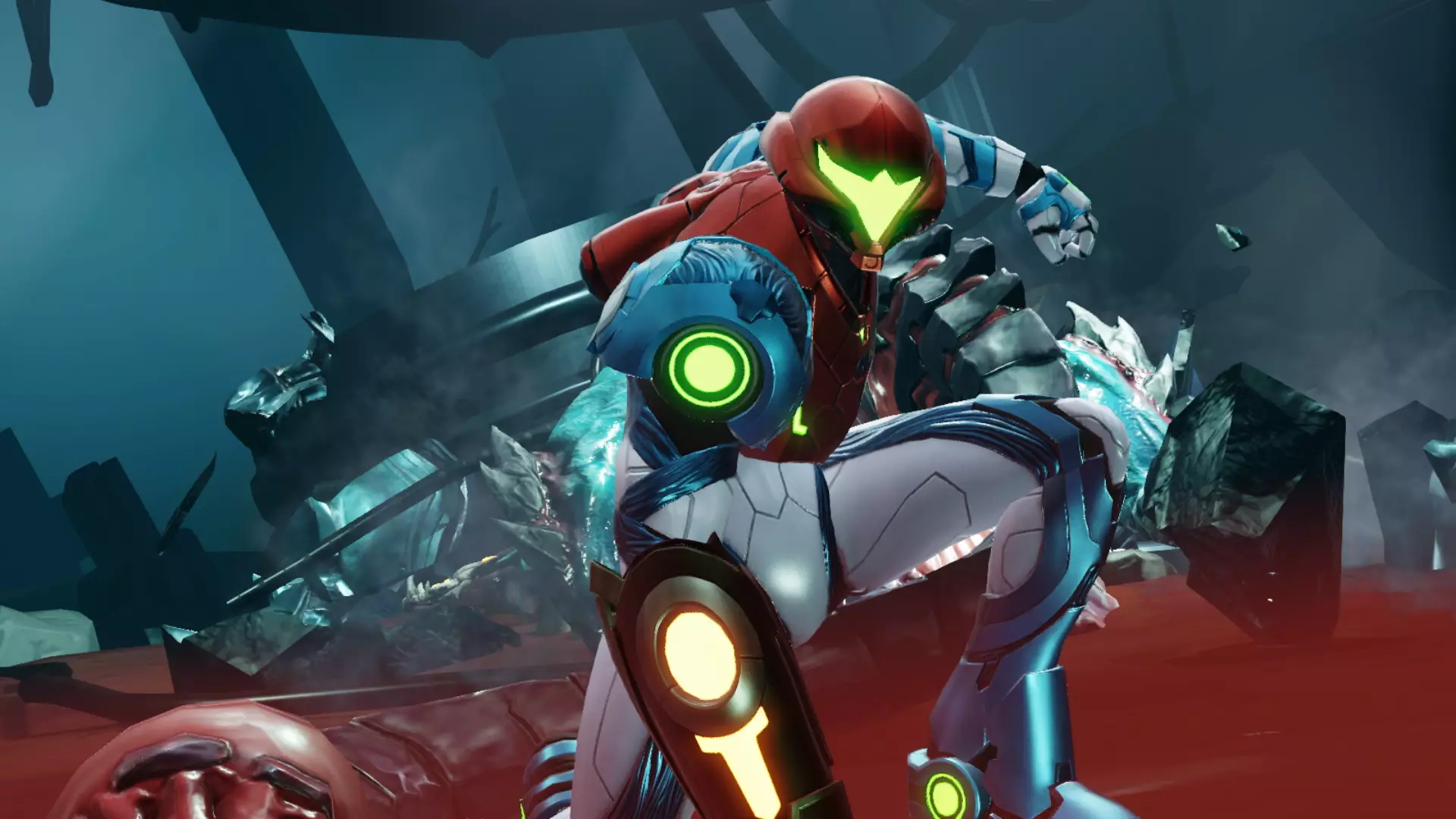
Mechanically speaking, Metroid Dread is an absolute dream. MercurySteam has created a Metroid that truly feels like the best possible amalgamation of all its 2D predecessors. It has the creeping horror of Fusion, the slick accessibility of Zero Mission, and the vastness of Super Metroid.
Advert
One of the first things you'll notice is what a delight Samus is to control. The bounty hunter is more agile than ever before in Metroid Dread, and is able to aim freely, slide under obstacles, and parry enemy attacks with a devastating melee counter. Add to this a crisp 60fps, with only a handful of stutters in areas with a particularly large number of enemies, and you have the smoothest Metroid game to date.
These new tricks give our hero an incredible sense of momentum that makes navigating the tunnels and tombs of ZDR a joy that only improves with each new unlocked ability. But there's also a pleasing heft and weight to Samus' movements. She'll land from jumps with a satisfying metallic clunk, while the morph ball trundles and rattles along uneven ground. These little touches add a pleasing physicality to the world that helps the experience feel that much more tactile.
That physicality extends to Metroid Dread's many bosses, which will quickly allay any fears you may have had that Nintendo would want to make the series a little easier after all these years. Some of Dread's bosses are among the most challenging I've ever encountered in a Metroid game, but they're also some of the most thrilling.
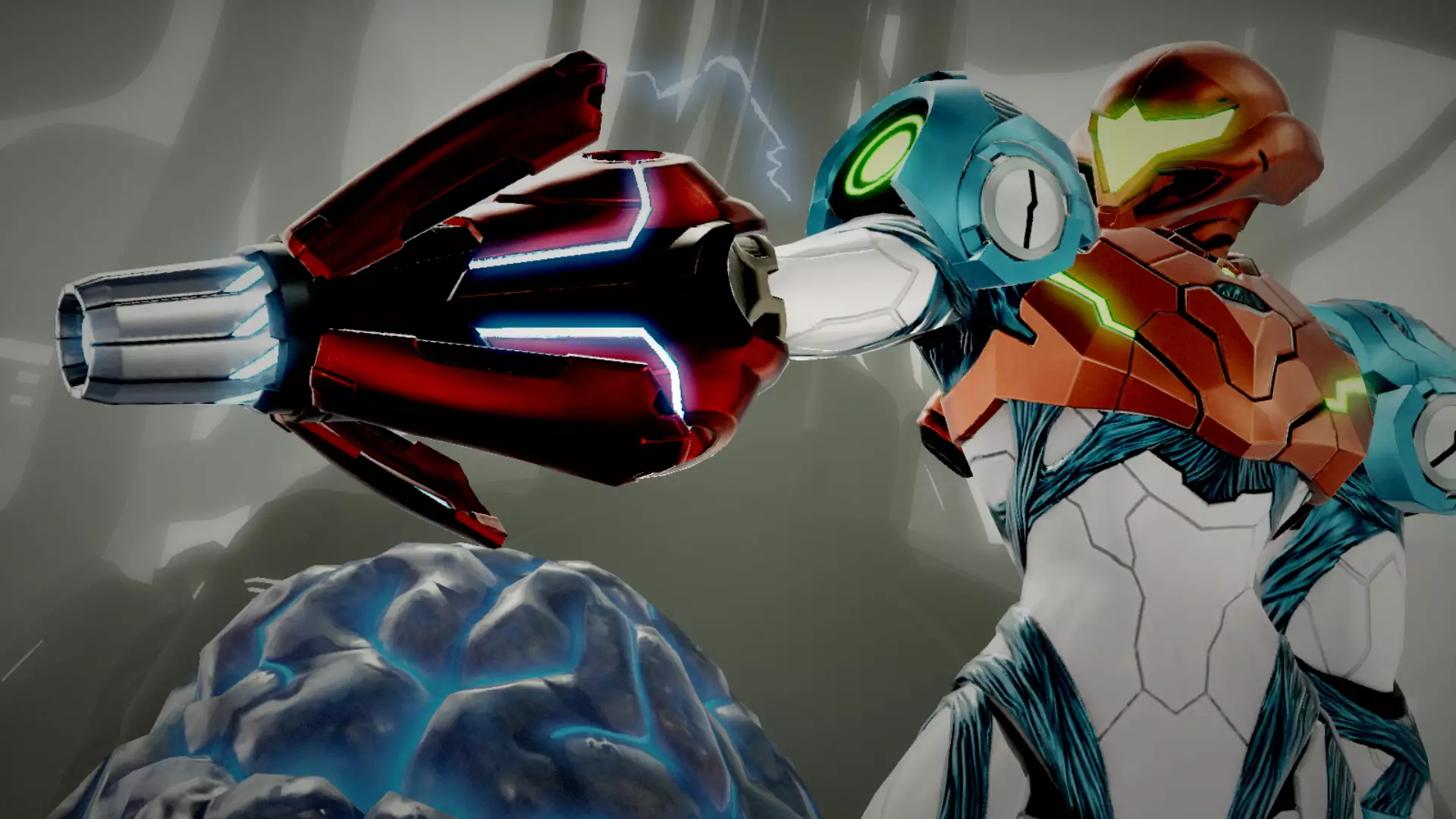
These are epic, multi-stage boss fights that fill the screen and are interspersed with the kind of cinematic cutscenes we've never seen in a 2D Metroid game before now. There's also the occasional fight with much quicker Samus-sized bosses. These brawls take place in much larger open spaces and really give Samus' new range of movement options a full workout. They're utterly punishing, but make for a nice and unexpected change of pace from the usual giant alien monsters.
Advert
While mastering a boss' attack patterns and learning their weaknesses over many attempts is part of what makes a Metroid game, I can't help but wonder if Dread might've benefited from an optional "easy" mode. It certainly didn't do Zero Mission any harm, and the existence of an unlockable "hard" mode very much implies that MercurySteam doesn't regard the standard difficulty as a completely inseparable part of the experience.
It isn't just the bosses in Metroid Dread that provide an ample challenge, though. he Extraplanetary Multiform Mobile Identifiers, or EMMI, are perhaps the game's biggest threat These drones are relentless in their pursuit of Samus, and make for some of the game's most testing - and outright terrifying - sequences.
The EMMI are a natural extension of Fusion's SA-X, in that all you can really do is run like hell when you see one. But where our encounters with the Samus clone on Game Boy Advance were entirely scripted, these new robotic menaces are utterly terrifying in their unpredictability.
EMMI only patrol certain areas, which means you don't have to constantly worry about where they might be. Even so, any journey through an EMMI zone soon becomes a heart-stopping trial of nerves as you desperately evade detection in an unbearably tense search for the exit.
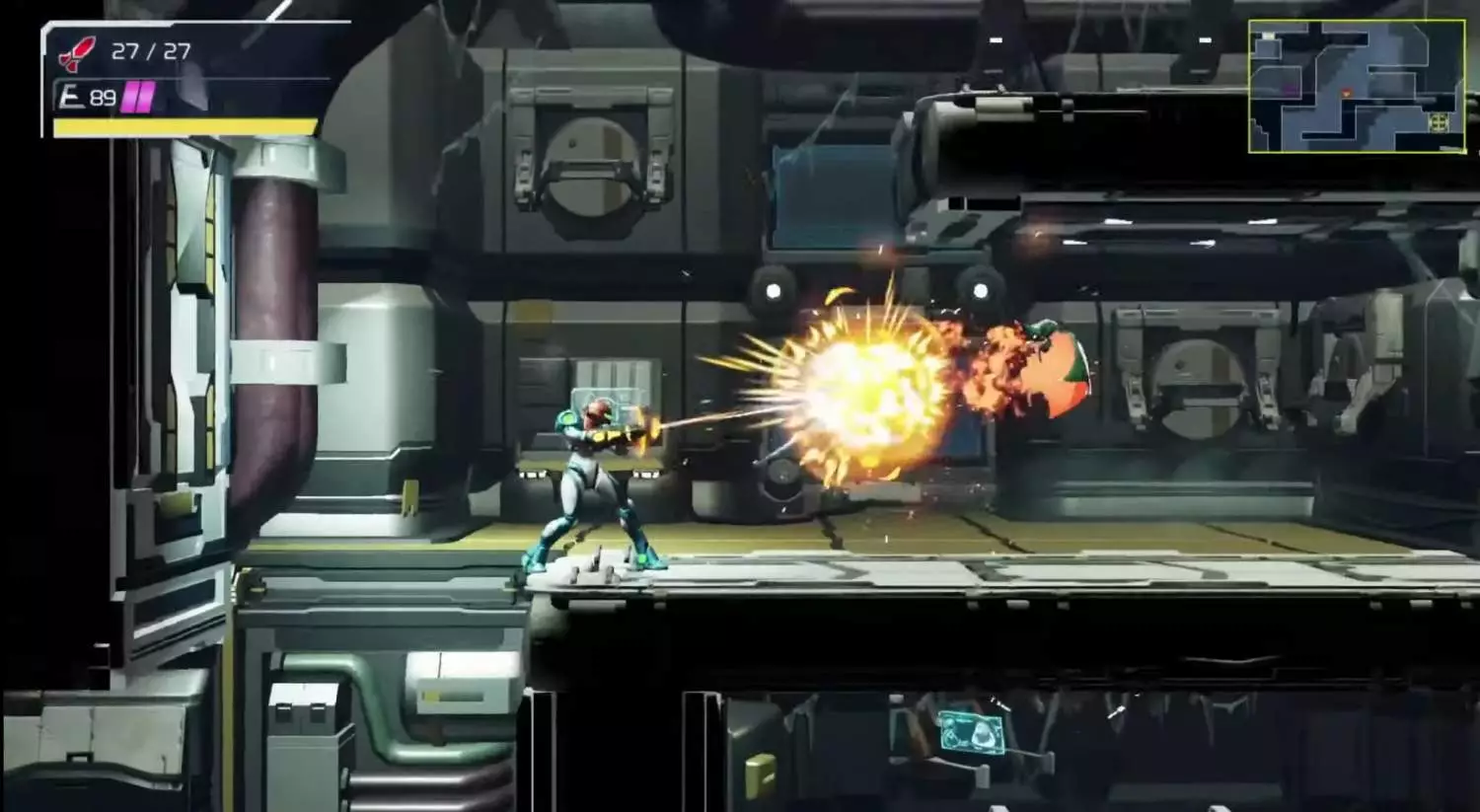
These robotic rascals are capable of killing Samus in just one hit, which effectively means it's game over the second they catch you (unless you can pull off an incredibly hard to time counter attack). This, in turn, means that one wrong turn made in a frantic panic can swiftly lead to a dead end that results in game over. You'll be seeing that game over screen a lot, unsurprisingly.
Advert
The good news is that EMMI can be killed if you can find the special Omega Cannon in each zone. Let me tell you, friends, finally picking up the means to blast those metal meanies straight back to hell is about as satisfying an experience I've had in a video game this year. Watching the camera zoom in and jump over my shoulder as I slowly charged up a powerful shot and blasted the head clean off my first EMMI was a moment, and it never gets old.
The last couple of Metroid games struggled with telling you exactly where to go and what to do. Fusion, while excellent, was an incredibly linear experience that would constantly interrupt the flow of exploration by having your onboard computer, Adam, brief you on your objectives every five minutes like an overzealous Alexa.
Metroid Dread is more than happy for you to get well and truly lost. Adam is back and will communicate with Samus via a handful of Network Relays scattered across ZDR, but this time he's here to dish out vague advice and guidance rather than outright tell you where to go at all times. You're handed a general direction to aim for, and are tasked with working out for yourself how to get there. This is what allows the game's sublime world design to truly shine.

Exploration of ZDR is perfectly complemented by a beautifully paced selection of items and powerups. As with any Metroid game, the focus is on picking up abilities, like the morph ball and speed booster, which help slowly unlock new paths and routes through a labyrinthian world that only grows more complex as you explore. There's a great mix of toys both old and new, but I won't spoil the joy of discovery for anyone here.
Advert
Crucially, the game very gently guides you along a certain route without ever making you feel like you're being explicitly told where to go. That's not to say there isn't still plenty of opportunity to jump off the beaten path and moments where you'll find yourself utterly lost. It just means that with a bit of common sense you won't ever find yourself running through the same areas wondering what the hell you're supposed to be doing for hours on end.
A greatly improved map system, which shows specific obstacles and allows you to highlight blockages that have yet to be destroyed, also plays a vital role in reducing needless backtracking. Given the sheer size of ZDR, you'll want to get used to it.
Make no mistake: ZDR is a hefty lad. It's awe-inspiring in its scope and dazzling in its variety. Over the course of your adventure you'll explore tropical underground jungles, glittering alien cities, and impossibly ancient caverns. I will say that after playing through a metroidvania like Hollow Knight, with its entirely interconnected world rife with unexpected routes and hidden passages, ZDR's various areas - which are accessed via teleports and elevators - feel a little disconnected by comparison.

Still, that doesn't stop it being a feast for the eyes at every turn. My personal favourite biome, a research facility tucked away in the side of a cliff by the ocean, never failed to take my breath away. Watching the alien waves lap angrily against the thick glass windows as the rain lashes down is a sight to behold.
Metroid has never looked this good, and it's a treat to finally see the franchise in HD. Backgrounds are filled with little details and pop like never before, while the camera can swoop out to convey scale or zoom in to make tense moments feel all the more claustrophobic. All of this looks incredible on the new OLED model, but I promise it'll dazzle you regardless of which Switch you choose to play on.
My other only real issue - if you can even call it an issue - with Metroid Dread is the game's length. It took me six hours to beat my first playthrough. Now, I'm well aware that Metroid games are traditionally short experiences and that part of the fun is playing through again and getting better times and completion rates. Even so, I can't imagine I'll be the only Metroid fan out there disappointed to roll credits on the first brand-new instalment in 11 years over a weekend. Especially for £50, which is - I think people forget - a lot of money for a lot of people.
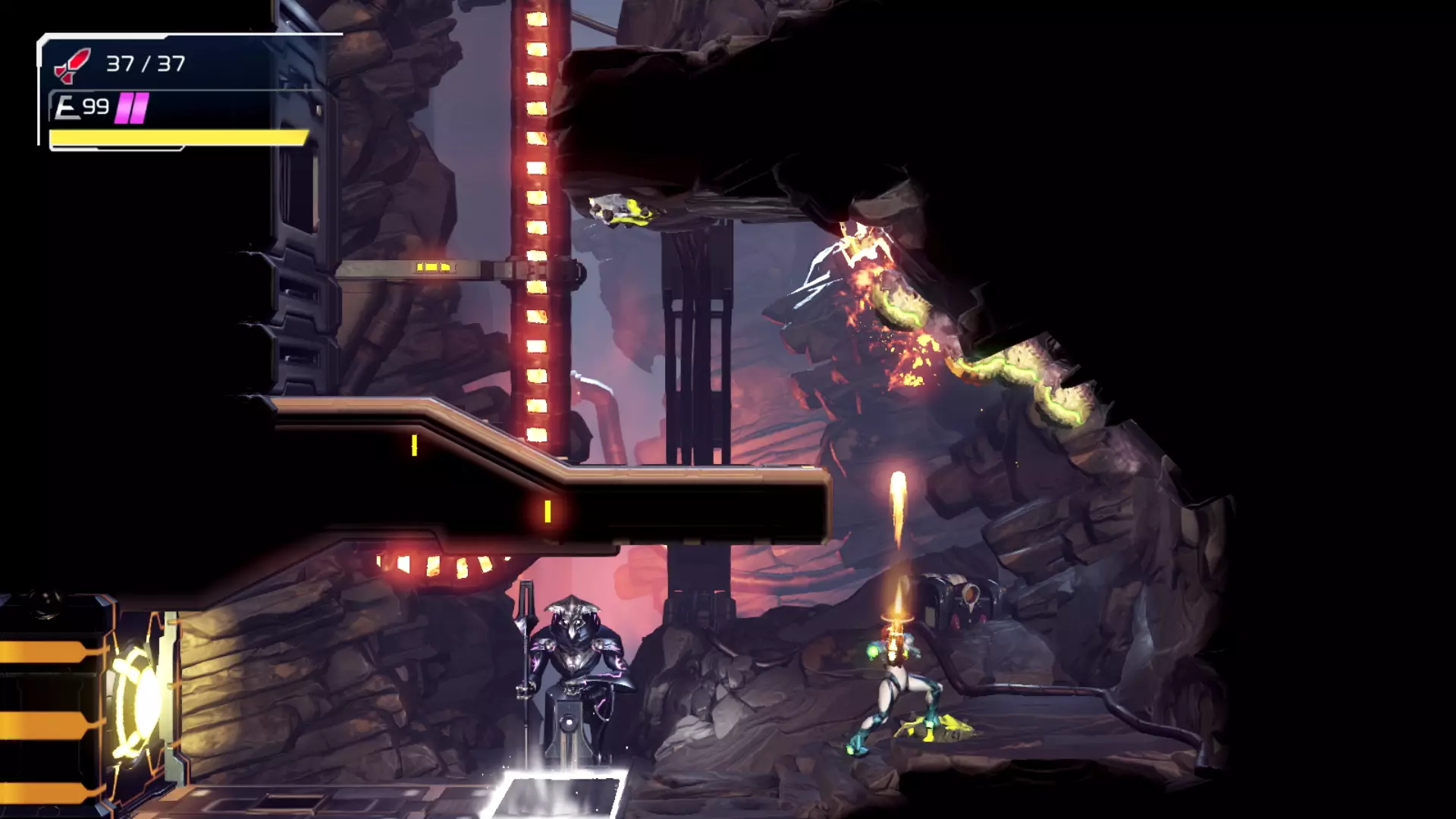
I am, on the whole, delighted to report that Metroid Dread is every bit as good as the fans had hoped it would be, delivering a stunning conclusion that lays the groundwork for a very exciting future. It's a masterfully executed, explosive action game that delivers on every level, and looks and feels exactly how a Metroid game should in 2021. There are eye-popping vistas, moments of sheer terror, and some of the most memorable - and challenging - boss battles in the series' 35-year history.
Samus Aran is back at her absolute best. Let's just not leave it so long next time, okay?
Pros: Beautiful locations, brilliantly paced horror, epic boss battles that will push you to your limits
Cons: Map can feel disconnected at times, may be too hard for some, a little short after such a long wait
For fans of: Super Metroid, Hollow Knight, Resident Evil 2
9/10: Exceptional
Metroid Dread is available on October 8 for Nintendo Switch. Code for review was supplied by the publisher. Find a guide to GAMINGbible's review scores here.
Featured Image Credit: Nintendo